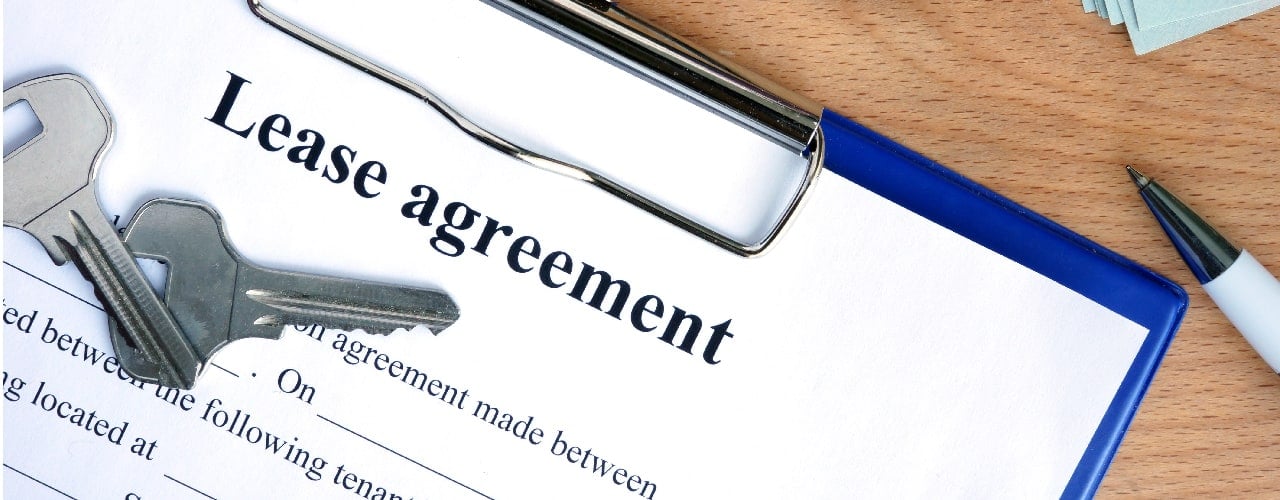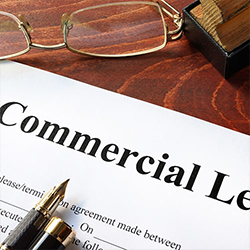
Whether you are a seasoned restaurateur looking to expand your operations or a first-time entrepreneur venturing into the foodservice industry by starting a restaurant, understanding the key aspects of leasing a restaurant is essential. Leasing a restaurant offers numerous benefits, such as flexibility in location selection, lower upfront costs compared to purchasing, and the ability to focus financial resources on other aspects of the business, like equipment and marketing. Below, we fully explore the advantages and considerations of leasing a restaurant, helping you make an informed decision for the future of your business.
Types of Commercial Leases
In general, there are four different types of commercial leases. They are known as gross leases, net leases, percentage leases, and variable leases. Each type determines which costs are covered by you and which are covered by the building owner. To learn more about each lease type and which one could be the best fit for you, continue reading below.
What Is a Gross Lease?

With a gross lease, the tenant pays a flat monthly fee, and they're not responsible for maintenance, utilities, or any other operational costs. Instead, these costs are built into the monthly rent, which protects the lessee from any unexpected costs.
What Is a Net Lease?
A net lease involves a lower flat monthly fee, but, unlike a gross lease, the tenant is responsible for some of the costs of operation. These costs can include property taxes, janitorial services, utilities, and insurance. When negotiating a net lease, be sure to discuss your exact financial responsibility so you don't get stuck with unexpected bills after signing a contract. There are three different types of net leases, including:
- Single - The tenant pays property taxes and rent.
- Double - The tenant pays property taxes, insurance, and rent.
- Triple - The tenant pays the net amount of property taxes, insurance, and maintenance as well as rent.
What Is a Percentage Lease?
Under a percentage lease, the lessee pays a fixed rental rate as well as a percentage of their business’s profits. In most cases, lessees aren’t required to pay a percentage of their profits until they reach a certain income level. This type of lease can be beneficial both for the landlord and the lessee. The lessee gets the advantage of having a low fixed rate as they establish their business, while the landlord can make more profit in the long run if the business occupying their commercial space becomes profitable.
What Is a Variable Lease?
Variable leases come in two forms: index leases and graduated leases. An index lease varies based on an index, typically the consumer price index or the local rental market. For example, if the local rental market's prices go up, then the leased rental price rise with them. A graduated lease changes based on a pre-set schedule. The rate at which the lease changes can be negotiated and arranged in different ways depending on the lessee and the landlord’s preferences.
Negotiating a Lease

Once you have found the perfect space for your new restaurant, it's time to meet with the landlord and lawyers to draw up a contract. Don't hesitate to ask questions and suggest changes when coming up with a lease agreement.
Considerations When Negotiating a Restaurant Lease
The details of a lease can vary depending on a variety of different factors. Below, we've listed some common considerations to take into account as you negotiate your lease:
- Lease Length - A short-term lease gives you the benefit of being able to relocate if you need more space, but a long-term lease will ensure that you don't have to take on the expense of moving shortly after getting settled. Typically, landlords will offer you a better deal if you lock into a long-term lease.
- Annual Rent Raises - Verify if your lease includes any annual raises in rent. If so, make sure that there is a cap on how much the landlord can raise the rent every year, or you might get stuck with inflated overhead costs that eat into your profits.
- Renovations - Consider who will pay for the renovations if you need to alter the space. Taking this into account can help you determine what your budget should be.
- Subletting Options - Ask if you would be able to sublease the space if you need to leave before your contract is over. This gives you flexibility in the event that you need to move.
Looking for a commercial location for your foodservice restaurant is an important step that requires knowledge about leasing options and how to negotiate a lease with your landlord. We hope you use our guide to sign the best lease option for your business, so you can dive into the fun part of starting your new business: designing a kitchen layout, buying equipment, hiring staff, and furnishing your dining space.
Buying a Restaurant vs Leasing a Restaurant

While owning your restaurant space can be beneficial, it’s not always the best option for new businesses. Studies show that buying your building will only pay off if you plan to stay in the same spot for over 7 years. New restaurants cannot predict what their business will need in 7 years. For example, your business could be so successful that you need to move to a larger space, or you may want to target a different neighborhood in your city. To make sure your business can continue to grow and meet your clientele where they are, we recommend that new businesses lease their space because it provides greater flexibility.
Alternatives to Buying or Leasing Restaurant Space
Depending on the circumstances and type of restaurant you're opening up, there are some alternatives to buying or leasing a restaurant space.
- Food Trucks - Purchasing a food truck allows you to own your space for less money than purchasing a storefront, and it keeps your location flexible.
- Building a New Restaurant - Rather than buying or leasing an existing space, you can also buy land and build a new establishment. While this is an expensive option, it allows you to build your restaurant to your exact specifications.
- Your Existing Space - If you already own a commercial space or want to add a restaurant to your existing business, you don't need to buy or lease a new building.
- Commissary Kitchens - Food trucks or catering businesses can look into renting space in a commissary kitchen rather than buying or leasing a specific space.
Tips for Leasing a Restaurant
Leasing a restaurant space can be a cost-effective way to enter the industry and establish your brand without the hefty upfront costs associated with purchasing a property. However, navigating the leasing process can be complex and daunting, especially for first-time restaurateurs. To help you make informed decisions and secure the right lease for your business, consider the following tips:
- Location Is Key - Choose a location that aligns with your target customer base and is easily accessible. Consider factors such as foot traffic, parking availability, and proximity to other businesses.
- Plan for Growth - Think about your long-term goals and how the leased space can accommodate your business expansion. Consider factors such as scalability, potential renovations, and future lease negotiations.
- Understand the Lease Terms - Thoroughly review the lease agreement and make sure you understand all the terms and conditions before signing. Pay attention to details such as rent amount, lease duration, maintenance responsibilities, and any additional fees.
- Seek Legal Advice - Consider consulting with a real estate attorney or advisor to help you navigate the leasing process. They can provide valuable insights, review the lease agreement, and ensure that your interests are protected.
How to Renegotiate a Lease

If you encounter financial hardship or discover that the terms of your lease aren't working for you, it's possible to restructure your lease. By contacting your landlord and explaining the situation, you may be able to come to an agreement that is beneficial for both parties. However, this process can seem confusing to those who haven't done it before. To renegotiate your lease, adhere to the following steps:
1. Understand Your Lease Obligations and Rights
The terms of commercial leases vary widely. Before entering into a conversation with your landlord, make sure you fully understand your lease agreement. While we don’t suggest opening the conversation with this, it is good to know what leverage you have.
2. Start an Open Dialogue with Your Landlord
Reach out to your landlord in a formal, yet non-confrontational manner. If you feel it is necessary, hire an attorney and have the attorney reach out to your landlord’s attorney. Here are a few tips for achieving a desirable outcome:
- Begin your communications with the term without prejudice. This indicates that you are interested in a negotiation, not in defaulting on your lease.
- If your reason for restructuring is pandemic-related, explain the hardships the coronavirus has imposed on your business and the steps you have taken to mitigate those hardships, such as setting up a delivery service in order to uphold your obligations as a tenant.
- Show a genuine interest in your landlord’s financial standing and struggles. Hearing your landlord’s position will show you what lease renegotiations are possible.
3. Develop a Mutually Beneficial Solution
Once a clear understanding of each parties’ struggles and current capabilities is established, you and your landlord can come to a fiscally feasible compromise for restructuring your lease. Educate yourself on common lease restructuring strategies before entering into negotiations.
Common lease restructuring strategies include:
- Rent Deferral - The postponement of rental payments or a portion of rental payments for an agreed upon time period.
- Rent Abatement - The suspension of rental payments or a portion of rental payments for an agreed upon time period.
- Rent Reduction - The reduction of rental payments or a portion of rental payments for an agreed upon time period.
- Loan Conversion - The conversion of overdue rent payments into a payable loan over an agreed-upon period of time. A loan conversion does not exempt the tenant from paying their current rent.
4. Document Your Restructured Lease Agreement
After you and your landlord have verbally agreed upon a mutually feasible means of restructuring your lease, you will need to document the changes in an official lease amendment by following these steps:
- Receive confirmation from your landlord that you will not be issued any default notices in the interim of your negotiation and its documentation.
- Create a physical copy of your lease addendum.
- Have an attorney review the changes made to your lease.
- All parties involved sign the restructured lease agreement and/or addendum.
While needing to restructure a lease is not ideal, sometimes restaurants in difficult financial positions are required to. By entering into a conversation with your landlord, you can avoid losing your commercial property, filing bankruptcy, or embarking on a costly legal journey after defaulting on your lease.
Leasing a restaurant space is a significant decision that can have a substantial impact on the success of your business. By carefully considering factors such as location, lease terms, and financial implications, you can make an informed choice that aligns with your business goals. Remember to negotiate favorable terms and and thoroughly review the lease agreement before signing. Much like leasing restaurant equipment, leasing a restaurant can be a strategic investment that allows for increased financial flexibility and sets your business up for long-term success with the proper planning.





